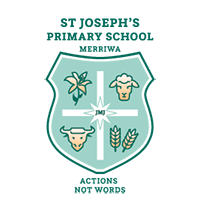Mathematics is essential for living and is required by individuals in order to function adequately as members of today’s society. It provides a means of oral and written communication and provides opportunities for the development of reasoning abilities.
The NSW Syllabus for the Australian Curriculum Mathematics K–10 (2012) addresses the knowledge, skills and understanding, as well as the values and attitudes that will enable students to develop an appreciation of mathematics and its application in their everyday lives.
The staff at St Joseph’s acknowledges the importance of this syllabus, as it provides a continuum of outcomes arranged in Stages the content strands (Number and Algebra, Measurement and Geometry, and Statistics and Probability). These strands are used to convey information in many ways. Some of these include explanations, figures, letters, tables, charts, diagrams, graphs and drawings.
AIMS
The aim of Mathematics in K–10 is for students to:
- Be confident, creative users and communicators of mathematics, able to investigate, represent and interpret situations in their personal and work lives and as active citizens.
- Develop an increasingly sophisticated understanding of mathematical concepts and fluency with mathematical processes, and be able to pose and solve problems and reason in Number and Algebra, Measurement and Geometry, and Statistics and Probability.
- Recognise connections between the areas of Mathematics and other disciplines and appreciate mathematics as an accessible, enjoyable discipline to study, and an important aspect of lifelong learning.
PROCEDURES
Mathematics is taught in a continuous block of 60 minutes each day. The Mathematics lesson follows a Balanced Mathematics Block Approach.
Each teacher at St Joseph’s uses the NSW Syllabus for the Australian Curriculum Mathematics K-10 (2012) to implement this KLA. Emphasis is on:
- Conceptual sequence from Early Stage 1 through to Stage 3
- Teaching the content of the syllabus
- Use of the K-10 Numeracy Continuum (DEC) supported by the learning framework in Numeracy
- Use of Information and Communication Technology within the Mathematics
- The provision of frequent opportunities to explore, discover, describe and record mathematical patterns and relationships
- Collaborative problem solving activities using various strategies and opportunities
- Programming for needs of class and students
Assessment of student achievement should incorporate measures of students’ ability to work mathematically and their knowledge, understanding and skills related to: Number and Algebra, Measurement and Geometry, Statistics and Probability.
Best Start Assessment will be used for all Kindergarten children to provide teachers with data on student entry level.
SENA1 and 2 Assessment will be used when applicable to identify student level of achievement in Mathematics.
PAT Maths Assessment will be used in Years 2 to 6.
